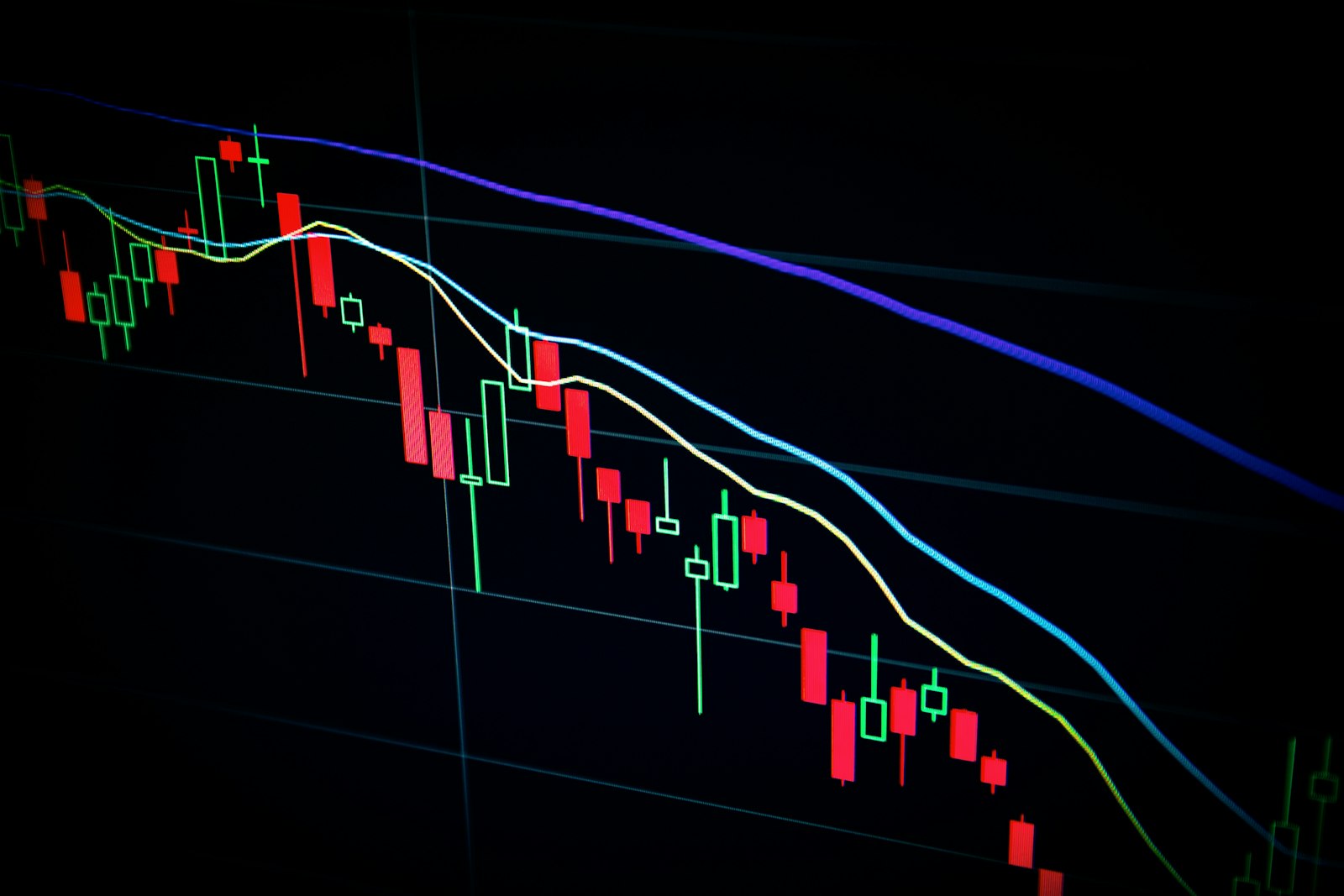It's no news to anyone that Toronto does not have a lot of draft picks this year. They have the 28th overall, plus the 153rd and 185th overall in the later rounds. Under Kyle Dubas – assuming he didn't already trade away his first round picks – he was known for trading down to get more picks and more shots to fire on prospects. That often helped keep their prospect cupboards looking less barren from all the picks he traded away.
If you're a fan of that kind of thing and sad that this won't happen now that Dubas is with another team, then good news! Brad Treliving has also been known to trade down. I think two or three times from what I remember from when I was looking into his draft history.

But to trade down, you need to have another team that wants to trade up. For another team that wants to trade up, they need to have a few things going for them.
- They need multiple picks in roughly the right spots for the value to be roughly equal
- They need to have a player in mind who's available at Toronto's pick (28) that they really like, and don't think will fall to their next pick.
That first point is important, but can be difficult to contextualize. Thankfully, there's been a lot of study into the average value of a draft pick – each draft pick, through the entire draft.
What Are Draft Picks Worth?
Reportedly, at least some NHL teams have their own draft pick value chart, which they may reference if they are mulling over a pick trade. This kind of thing has been around in other sports as well, for around a couple decades at this point. For our purposes, there have been a number of public hockey analysts who put together their own models that we can use for our own purposes here.
For example, Michael Shuckers did a full study looking at the odds that a draft pick would play 200+ NHL games back in 2011. He presented the linked paper at a sports consult conference, and it has been one of the most used studies by other public analysts since then. Here is a helpful visualization, in table form, that shows his findings:

Eric Tulsky, now with the Carolina Hurricanes' front office, did his own study back in 2013 that set the values of picks based on how teams traded picks in the past. In 2015, Garrett Hohl at Hockey Graphs expanded on both Schucker's and Tulsky's works. Their works are worth reading if you're hardcore into this kind of thing, like I am.
More recently, in 2020 Dom Luszczyszyn at The Athletic did his own study, using his GSVA model to plot values per pick. It tried to look more at the likely value a prospect will provide in the NHL, if they even make it, like Schuckers did. The TL;DR of what GSVA does is essentially combine as much statistical information about a player's performance, assign a weight to each metric according to how much it helps a team win games, then calculates a total "Game Score Value Added". It's basically WAR (Wins Above Replacement) for hockey, according to Dom's own model. Here's a table that shows the GSVA he calculated to each pick back when there were only 31 teams.

What I'm going to do is use the two visualized tables above to see if there are any teams who have draft picks whose values add up close to Toronto's pick at 28. We can consider them to be the potential candidates that the Maple Leafs can trade down with, even if we can't know whether or not those teams would actually want to trade up.
Draft Pick Trade History
First, I want to go through a recent history of these kinds of trades at the draft to get an idea for the realistic range of value discrepancies that NHL teams will tolerate. Because let's face it, it's impossible to make pick trades where the value comes out to exactly even. They will mostly try and get it close in their minds, though different teams may have different ways of calculating this sort of thing.
So that said, here's a recent history of draft day trades, where one team traded one of their high or high-ish draft picks to another team for multiple, lower picks. I am going to include in each trade what the summed values are for both sides as well, to get an idea for how close the trades got according to two models. I will use "TV" or "Total Value" from Michael Shucker's model, and GSVA for Dom's model.
I am not going to include other contextual information about each pick. I mostly mean what players were taken with each pick, both because that makes the list below a lot more information dense but also because I think that information is irrelevant. The point of this is to look at rough draft pick value, not who won the trade in the end based on who they picked.
I am also only going to look at picks in the first and earlier second rounds, since that's what is more relevant to Toronto's situation with the 28th overall pick. But it also helps keep the list from getting too long and noisy, again.
Got it? Good.
2022:
- Arizona traded the 27th, 34th, and 45th picks (362.63 TV / 7.5 GSVA) to San Jose for the 11th pick (338.98 TV / 5.7 GSVA)
2021:
- Detroit traded the 23th, 48th and 138th picks (324.15 TV / 5.6 GSVA) to Dallas for 15th pick (284.29 TV / 4.9 GSVA)
- Minnesota traded the 22nd and 90th picks (224.68 TV / 4.3 GSVA) to Edmonton for the 20th pick (227.56 TV / 4.0 GSVA)
- Nashville traded the 40th and 51th picks (151.79 TV / 3.6 GSVA) to Carolina for the 27th pick (166.15 TV / 3.2 GSVA)
- Detroit traded the 38th and 128th (106.42 TV / 2.5 GSVA) to Vegas for the 36th pick (111.03 TV / 2.4 GSVA)
2020:
- NY Rangers traded the 22nd and 72nd picks (236.01 TV / 5.7 GSVA) to Calgary for the 19th pick (237.96 TV / 4.2 GSVA)
- Washington traded the 24th and 80th picks (212.24 TV / 4.2 GSVA) to Calgary for the 22nd pick (208.05 TV / 3.7 GSVA)
- Buffalo traded the 38th and 99th picks (114.43 TV / 2.7 GSVA) to San Jose for the 34th pick (121.36 TV / 2.5 GSVA)
2019:
- Arizona traded the 14th and 45th picks (372.25 TV / 6.9 GSVA) to Philadelphia for the 11th pick (338.98 TV / 5.7 GSVA)
- Philadelphia traded the 45th and 65th picks (110.13 TV / 2.8 GSVA) for the 34th pick (121.36 TV / 2.5 GSVA)
2018:
- NY Rangers traded the 26th and 48th picks (240.08 TV / 5.0 GSVA) to Ottawa for the 22nd pick (208.05 TV / 3.7 GSVA)
- Blues traded the 29th and 76th picks (176.64 TV / 3.8 GSVA) to Toronto for the 25th pick (181.80 TV / 3.4 GSVA)
Trends
There are some trends you may notice when looking through that list. First, pick trades do usually wind up pretty close in terms of the sum numerical values – according to these two public models, anyway. However, it definitely looks like by Schucker's model, it's more 50/50 on if the team trading down gets more value or not. By Dom's model, on the other hand, seems like the team trading down almost always gets a bit more value. That makes sense to me, it basically seems like a little "value tax" added on to the team that is losing out on the better value pick in terms of quality.
Another trend that you can notice is that it is possible, but rare, for a team to trade more than two draft picks in order to trade up. In fact, it has happened only three times in this pick range in the last seven years (I only wrote out the past 5 years) – although it has happened in the last two consecutive drafts. I am keeping that in mind for finding potential teams Toronto can trade with.
What Teams Could Toronto Trade Down With?
With all of the above in mind, here are the NHL teams entering the 2023 NHL draft with some combination of picks below Toronto's that could make sense for a trade down. I specifically want the trade to wind up close in total value, but with Toronto having slightly more following the trends I mentioned.
So let's get to it, keeping in mind that Toronto's pick value at 28th overall is 158.84 TV per Schucker and 3.1 GSVA per Dom.
Anaheim Ducks
The Ducks have the following picks:
- 33rd = 126.90 TV / 2.6 GSVA
- 59th = 43.20 TV / 1.2 GSVA
- 60th = 41.66 TV / 1.2 GSVA
- 65th = 35.01 TV / 1.0 GSVA
- 85th = 19.15 TV / 0.6 GSVA
Per Schucker's model, Toronto trading from 28th (158.84) for Anaheim's 33rd and 65th overall picks would be pretty close (161.91) with a bit of an edge for Toronto. Per Dom's model, the 33rd + 65th overall comes to 3.6 GSVA, which again is a bit higher than the 3.1 GSVA that the 28th is worth.
Would Anaheim do it? They would move up to get another first round pick, which always sounds sexy to fans and people who think there's a more substantial difference between the 28th and 33rd overall picks. And they also still have two picks later in the second round. Of all the options, this one seems at least possible, but likely hinges on Anaheim really wanting someone still available at 28 that they think won't be at 33.
If Toronto got 33 and 65? Toronto could wind up with some combination of Brindley, Heidt, Stramel, or Molendyk at 33, and Whitelaw, Akey, Suniev, Price, or Misiak at 65.
Arizona Coyotes
The Coyotes have the following picks:
- 38th = 101.64 TV / 2.2 GSVA
- 70th = 29.76 TV / 0.9 GSVA
- 72nd = 27.96 TV / 0.9 GSVA
- 81st = 21.45 TV / 0.7 GSVA
- 88th = 17.60 TV / 0.6 GSVA
Per Schucker's model, the 38th, 70th, and 81st picks add up to 152.85, which would be a bit lower than Toronto's 28th pick (158.84), but it's close. But per Dom's model, Toronto would be getting 3.8 GSVA vs losing 3.1 – so it would be a slight win.
Would Arizona do it? Well, they've actually been as equally aggressive in accumulating lots of draft picks under Bill Armstrong as they've been at trading them away to trade up or trade for NHL players. Last year they gave up three picks to move up to 11. This year they already have two first round picks (6 and 12), then a lot more picks in the third rounds – four of them, to be specific. Would they give up their second and two thirds to move up and get another first round pick? They would still have two third round picks, so this is another one I think is possible if they have a player in mind at 28.
If Toronto got 38, 70 and 81 I'd love for Toronto to go for one of Molendyk and Edstrom at 38, then two of Whitelaw/Suniev/Price/Pekarcik/Misiak/Ciernik with the later two picks.
Buffalo Sabres
The Sabres have the following picks:
- 39th = 97.27 TV / 2.2 GSVA
- 45th = 75.12 TV / 1.8 GSVA
- 86th = 18.62 TV / 0.6 GSVA
The only trade that comes close to equaling in value is Buffalo giving up the 39th and 45th picks for Toronto's 28th overall. Per Schucker's model, that would be 172.39 TV to Toronto vs 158.84 TV to Buffalo. Per Dom's model, it would be 4.0 vs 3.1 HSVA with Toronto getting the better value.
Would Buffalo do it? Considering it's a division rival as well, I find this one less likely even before you talk about the discrepancy in value by both models. I'm not going to completely write it off as a possibility, since there has been divisional pick trades before and maybe Buffalo really likes someone still available at 28 since it's a longer way down to 39th.
With that trade, Toronto could wind up with a combination of Edstrom/Dvorak at 39 and Sawchyn/Molgaard/Nilsson at 45.
Chicago Blackhawks
The Blackhawks have the following picks:
- 35th = 116.07 TV / 2.4 GSVA
- 44th = 78.37 TV / 1.9 GSVA
- 51st = 58.67 TV / 1.5 GSVA
- 55th = 50.16 TV / 1.4 GSVA
- 67th = 32.76 TV / 1.0 GSVA
As a rebuilding/tanking team, Chicago has been getting as many picks in the first few rounds as possible. They have two picks in the first round, four picks in the second round, and one pick in the third round that's close enough to the late second that it's basically the same in value.
With these picks there's a couple of different trade combinations they could do. They could deal the 35th and 55th picks, which would equal 166.23 TV / 3.8 GSVA for both the models. Both give Toronto a bit more value. They could also do the 44th, 51st and 93rd which would be 152.30 TV / 3.9 GSVA. Toronto would be down in the total value by a bit per Schucker's model, but ahead by a bigger amount per Dom's.
Would Chicago do either? Well, we saw last year how much they wanted to get more first round picks specifically. They dealt DeBrincat to get the 7th and 39th overall, Kirby Dach to get the 13th and 66th overall, and took on Mrazek's contract plus giving away the 38th overall pick to get the 25th overall from Toronto.
Like Arizona, they also already have two first round picks – the first overall of course, and the 19th overall. They also have the four second round picks, and an early third rounder. If they are of the same mindset to get more first round picks again, this is a possibility for them. But I still find this less likely than Arizona, because I think they may want to use some of their draft picks to get some good, young NHLers to play with Bedard and not just leave him out on an island with a tire fire of a roster that they have as of now.
But if Toronto does do these trades? With the first option Toronto could get one of Stramel, Molendyk or Edstrom plus one of Lardis, Molgaard, Nilsson, Perron or Akey.
With the second option, they could get one of Dvorak or Sawchyn, then one of Ladis, Molgaard or Nilsson, then one of Fowler, Levis, or Nurmi.
Columbus Blue Jackets
The Blue Jackets have the following picks:
- 34th = 121.36 TV / 2.5 GSVA
- 66th = 33.86 TV / 1.0 GSVA
- 80th = 22.07 TV / 0.7 GSVA
The only pick trade that makes sense here is the 34th and 66th. Per Schucker, the total value of those are 155.22 which is ever so slightly below the value of the 28th pick (158.84). Per Dom's model, it would be 3.5 to Toronto vs 3.1 going to Columbus, which is also pretty close but a bit better for the Leafs.
Would Columbus do it? Well, this is one of the closest deals in value that I think is on this list. But I think this one that is less realistic. They don't have a lot of draft capital like the other teams, and while they weren't intentionally bad last year they are still on the upward part of a rebuild. The last time they traded up in a draft was, ironically, with Toronto back in 2015, so it's not something they've done that often.
But again, maybe they make some other moves that give them more picks. Maybe there's someone at 28 they love and don't like many that are projected to go in the 2nd and 3rd rounds. So I won't completely write it off as a possibility.
Detroit Red Wings
The Red Wings have the following picks:
- 41st = 89.15 TV / 2.1 GSVA
- 42nd = 85.38 TV / 2.0 GSVA
- 43rd = 81.79 TV / 2.0 GSVA
- 73rd = 27.12 TV / 0.8 GSVA
The best way to get this deal closest is involving two of those three consecutive picks that Detroit has in the 2nd round, specifically the 42nd and 43rd picks that add up to 167.17 TV per Schucker's model, and 4.0 GSVA per Dom's model. That's a bigger win for the Leafs in this case, one of the bigger discrepancies according to both models on this list. What they don't have is a lot of third round picks to combine with one of those second rounders.
Would Detroit do it? Put them in the same scenario as Columbus from what I said above. I find this possibility to be one of the least likely on the list, again just barring there being a player at 28 they really, really want.
Vegas Golden Knights
The Golden Knights have the following picks:
- 32nd = 132.71 TV / 2.7 GSVA
- 77th = 24.07 TV / 0.8 GSVA
Vegas is an interesting option. They just won the Cup, so there's less pressure on them than anybody. They haven't shown any inclination to trade up in any of their other drafts, likely since they seem to prefer to just deal away their picks and prospects to acquire NHLers anyway.
That said, if they dealt the 32nd (still technically a first rounder) and the 77th overall picks, that's a 156.78 TV per Schucker and 3.5 GSVA per Dom. So I take back what I said about Columbus, this is the closest trade on the list in terms of value being exchanged in this hypothetical deal.
Would Vegas do it? Again, only if there's a player at 28 they really, really like. But since their pick is at 32, it's not like they're that far away from 28th where that may be a more likely scenario.
Seattle Kraken
The Kraken have the following picks:
- 50th = 61.08 TV / 1.6 GSVA
- 52nd = 56.38 TV / 1.5 GSVA
- 57th = 46.50 TV / 1.3 GSVA
- 84th = 19.70 TV / 0.6 GSVA
The last team I'm including on this list is the Kraken, who are very much an up and coming team. They are brand spanking new for prior draft history, but Francis had been running the show for Carolina before – and they've been more likely to trade down than up.
But they have an interesting scenario for trades to offer that shows the differences between the two models. Per Schucker's model, if they dealt Toronto their 50th, 52nd and 57th overall picks (163.96 TV), that looks like a semi-reasonable exchange for the value of the 28th (156.78 TV). But it's a lot more lopsided for Toronto per Dom's model, where it's 4.4 GSVA going to Toronto vs 3.1 going to Seattle. But, per Dom's model, you could the 52nd, 57th and 84th picks (3.4 GSVA) to get closer.
The reason for that is how much more Schucker's model emphasizes the value of higher picks. It's a much steeper drop after the first round, where Dom's model seems to be a bit smoother and more gradual, so his model gives those later second round picks more value compared to a late first rounder.
Would Seattle do either of those deals? I do think the second option presented by Dom's model seems more likely, since it leaves Seattle with at one of their second round picks – and it's the highest one at that. But I am more skeptical Toronto would do that, since going from 28th overall to 52nd is the biggest drop I'm presenting on this list.
Conclusions
I do think it is possible that Toronto – if they don't use their first round pick in another kind of trade instead – could find themselves with some reasonable options to trade down from 28 if they so wanted. There are a few teams that are in situations with their number of picks and wanting to rebuild and make bigger splashes with a higher count of "first round" picks.
So unless one really good prospect falls to 28th – and for me that's Danielson, Stenberg, Ritchie, Simashev, Willander, or Gulyayev – there's such a large group of prospects who will be available in the second and third rounds that are close to the value of everyone else potentially available at 28th (per Bob McKenzie's list) that I think trading down is a smart option.
Let us know what you think in the comments!
Thanks for reading!
I put a lot of work into my prospect articles here, both for the draft and Toronto's prospects. I do it as a fun hobby for me, and I'd probably do it in some capacity even if PPP completely ceased to exist. But if you like reading my work, some support would go a long way! I pay for a few streaming services (CHL, some NCAA, some USHL, the occasional TSN options for international tournaments that are broadcast) to be able to reliably watch these prospects in good quality streams. I also pay for some prospect-specific resources, such as tracking data and scouting reports from outlets like Elite Prospects, Future Considerations, McKeen's Hockey, and The Athletic.
Being able to get paid for this helps me dedicate more time and resources to it, rather than to second/third jobs. And whatever money I make here, a lot of I reinvest back into my prospect work through in those streaming and scouting services. Like I said, I'd be doing whatever I can afford for this anyway, so any financial help I get through this is greatly appreciated!








Comment Markdown
Inline Styles
Bold: **Text**
Italics: *Text*
Both: ***Text***
Strikethrough: ~~Text~~
Code: `Text` used as sarcasm font at PPP
Spoiler: !!Text!!